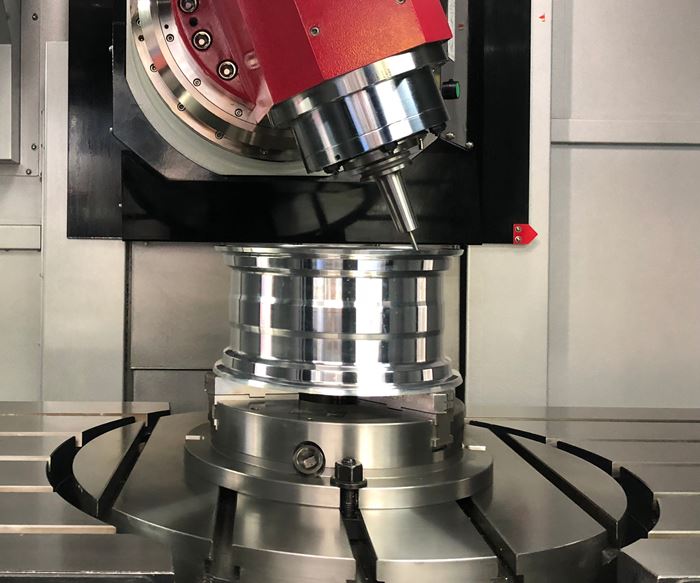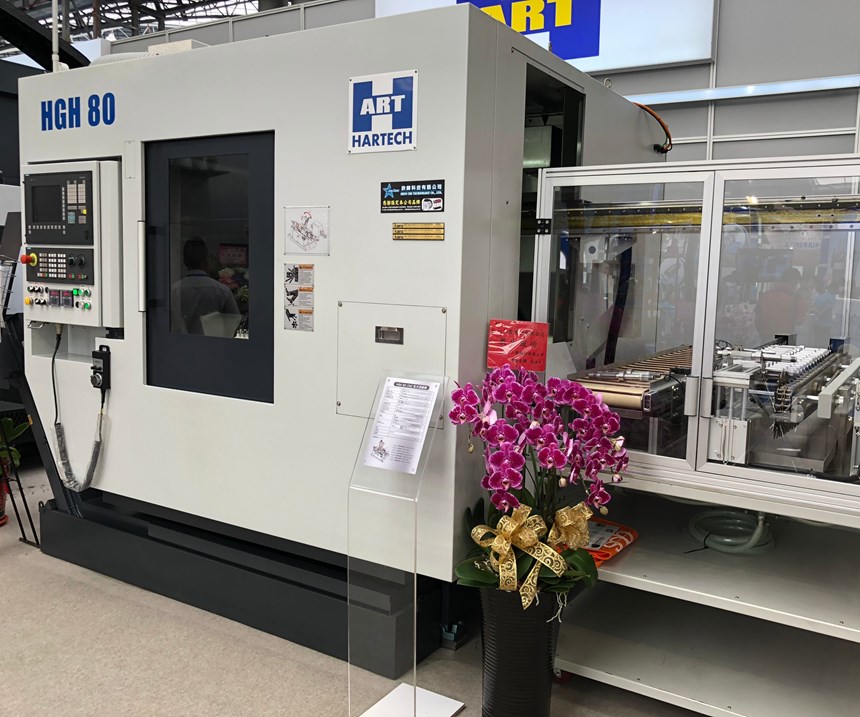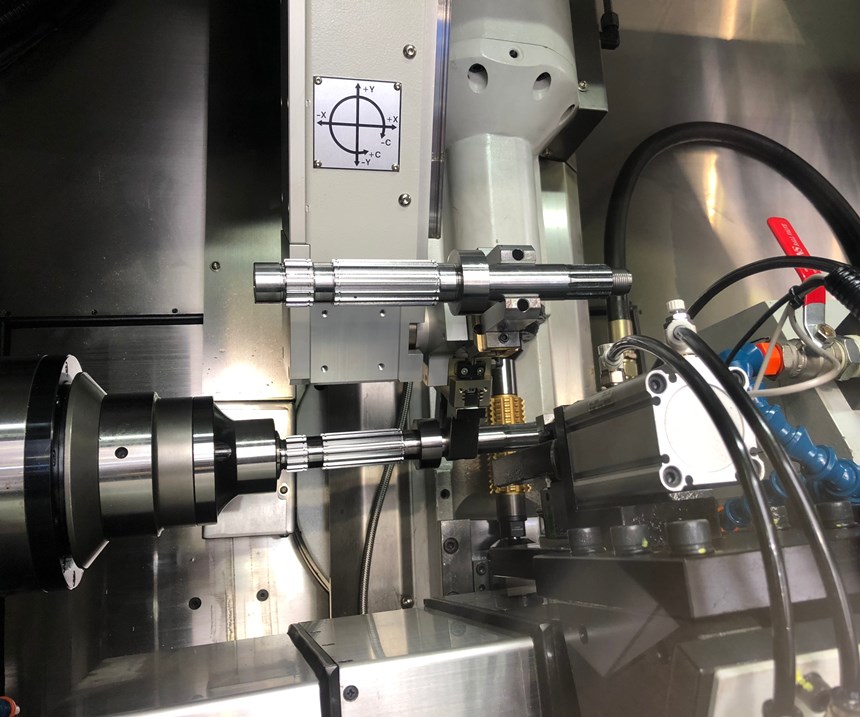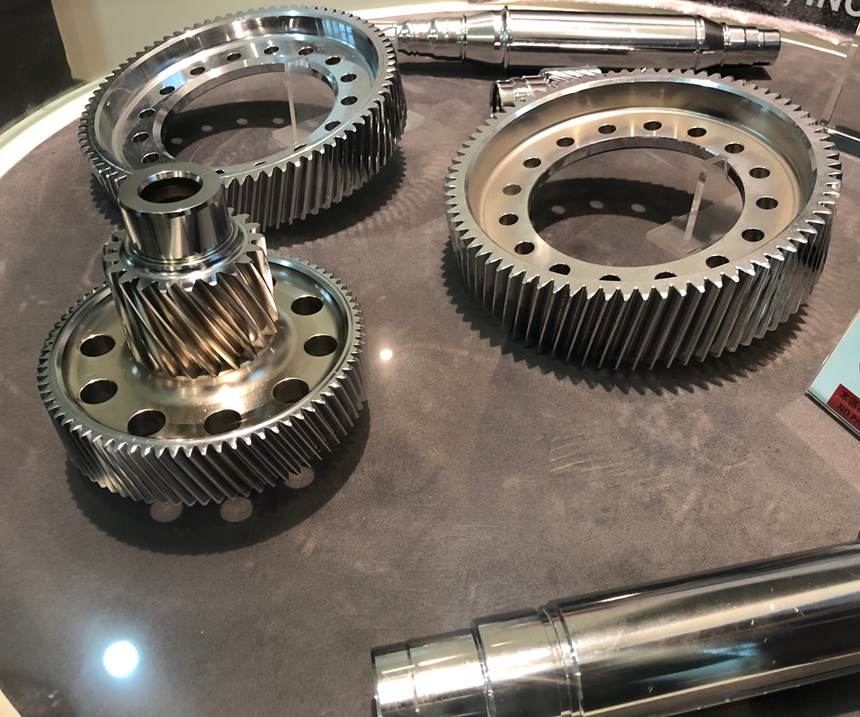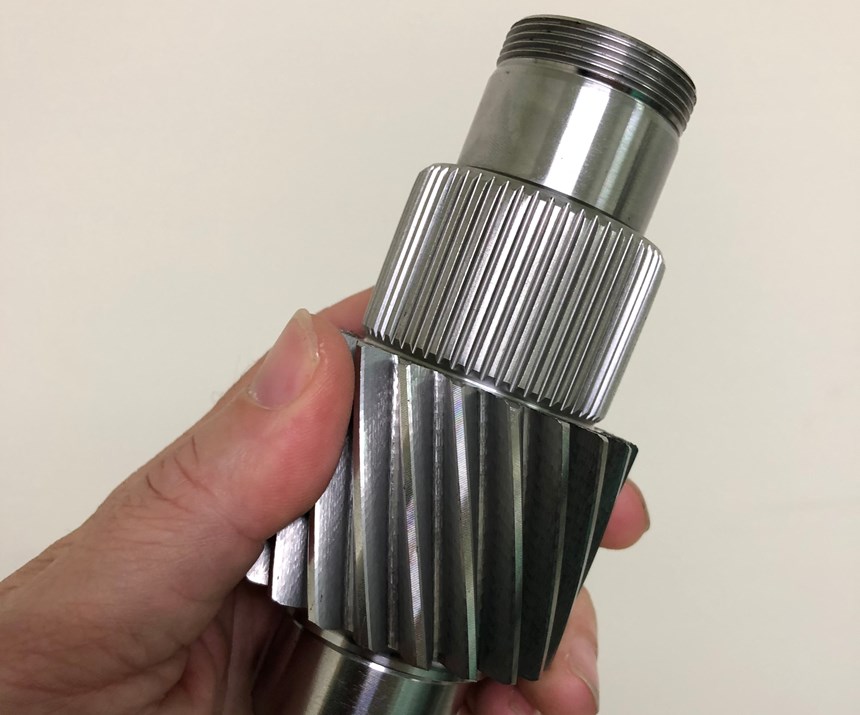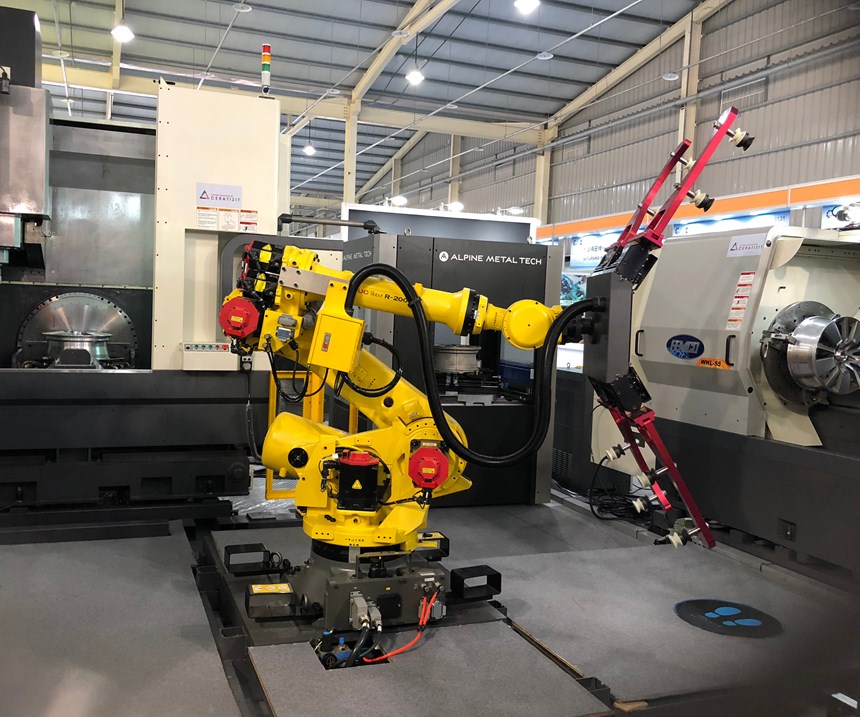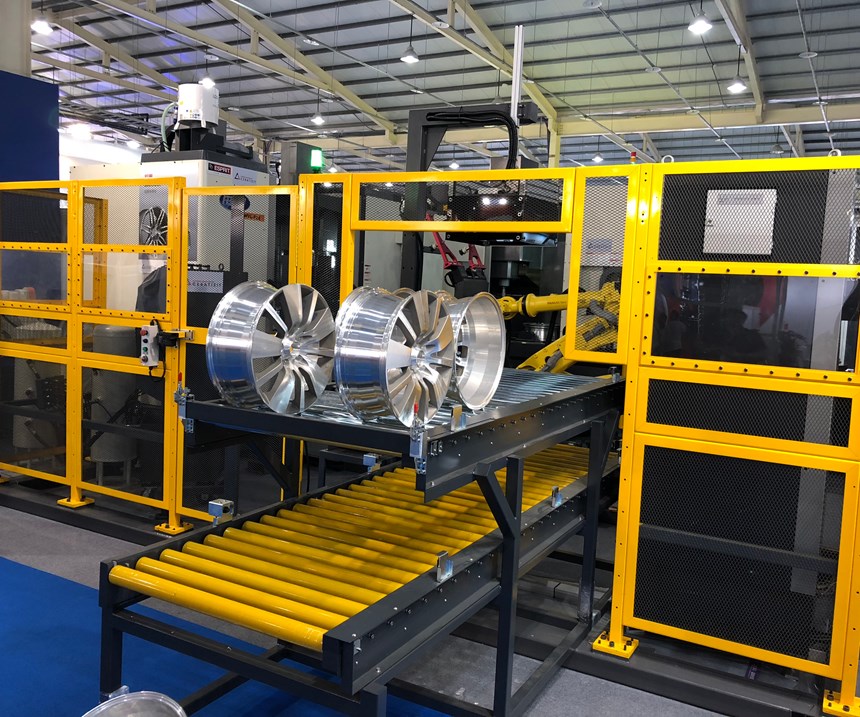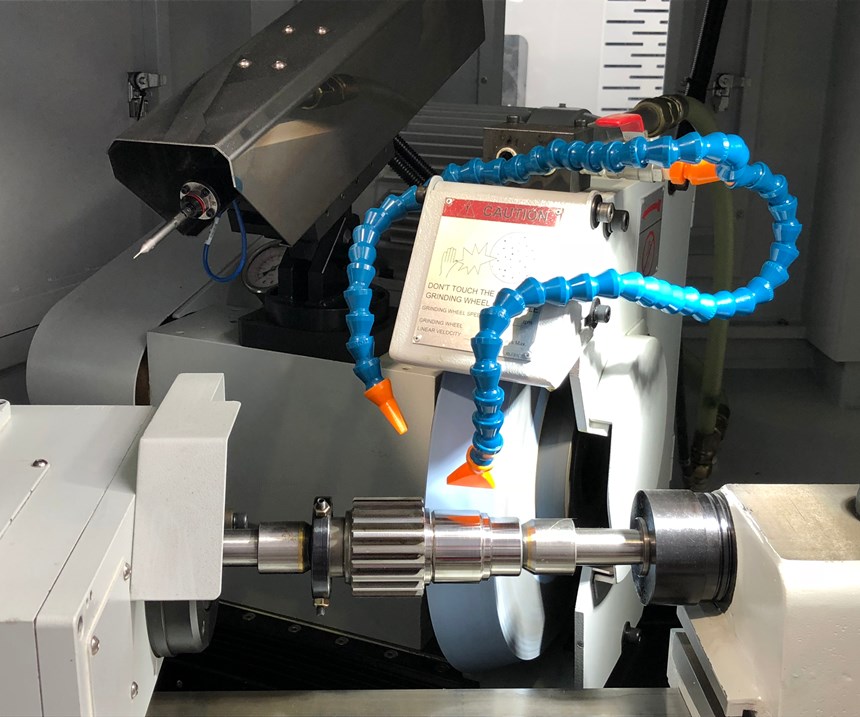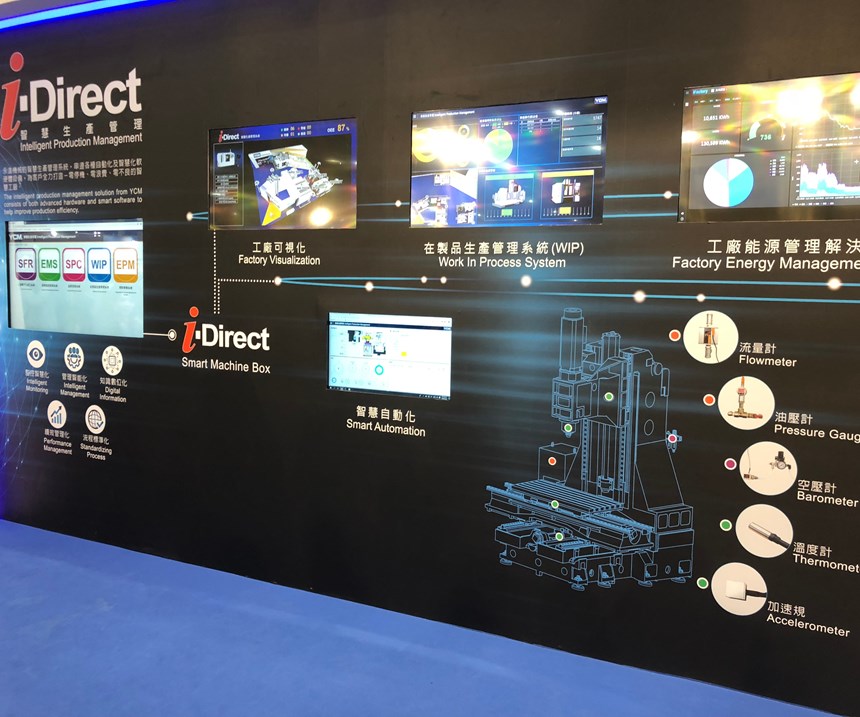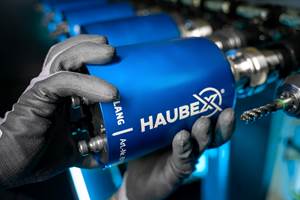Share




It is impossible to write a comprehensive article that thoroughly covers all the new technology presented at a manufacturing trade show. Take, for example, the Taiwan International Machine Tool Show (TMTS) I attended last November in Taichung. TMTS is presented by the Taiwan Machine Tool and Accessory Builders’ Association (TMBA), and its location at the Taichung International Exhibition Center is close to many of the country’s machine tool builders.
Last year’s show drew more than 86,000 visitors, featured more than 4,000 booths, and took up more than 414,000 square feet of floor space. It included a range of new machine tool, cutting tool, workholding, software, automation and other manufacturing equipment offerings. Technology supporting Industrial Internet of Things (IIoT) concepts was conspicuous there, too, demonstrating how disparate manufacturing elements can be connected to enable data sharing, collection and analysis so more informed decisions can be made on the shop floor. In fact, some of this I learned about during another recent Taichung trip to see machine builders YCM, Cosen, Goodway, Quaser, Tongtai and Fair Friend Group.
Knowing I had set up a side trip to visit to HOTA Industrial, a leading Taiwanese manufacturer of transmission gears and shafts for automobiles, trucks, motorcycles and agricultural equipment, I decided to focus on technology at TMTS that supports the automotive industry. In particular, that still will be required when production of conventional internal combustion engine vehicles gives way to electric vehicles (EV), such as shaft grinding, wheel manufacturing and gear machining. HOTA manufactures components for various EV OEMs and Tier One suppliers.
Machining Technology for EVs
According to the tracking website Inside EVs, an estimated 361,307 plug-in electric vehicles were sold in the United States in 2018, which is 81 percent higher than its estimated 2017 sales. This trend is likely to continue especially as governments continue pushing for their adoption. So, what does that mean for automotive suppliers? While components such as pistons, rods, crankshafts will eventually go away, production of other traditional vehicle components will still be required. Here are a few examples seen at TMTS that are well-suited for manufacturing these components.
Gear Machining
Tom Chen, HOFA director, says gear specifications for accuracy and surface finish quality for EV applications are tighter than louder internal combustion engine vehicles. This precision is required because gears for EV applications typically reach higher rotational speeds and must operate more quietly than conventional internal combustion engine vehicles, Mr. Chen notes. HOTA hobs its gears for EV applications and then heat treats, grinds and polishes them. The company achieves +/-4 microns tolerance on the gear profiles, he says. All of these processes are performed in-house, and the company uses high-speed Reishauer machines for grinding operations.
In addition to producing gears, HOTA also manufactures and sells the Hartech brand of CNC gear hobbing, shaving and deburring machines. The company had developed these machines for its gear-production business, but established its Hartech machinery division in 2005 to offer that equipment to other gear manufacturers. The six-axis Hartech HGH 80 high-speed gear hobbing machine displayed at TMTS accommodates workpieces with diameters ranging to 80 mm and hob tools as long as 130 mm. The machine also includes sensors to compensate for any thermal growth of its structural components and is available in larger 150- and 250-mm models. The HGH 80 at the show featured a gantry loader and in-feed and out-feed parts conveyors. In fact, every HGH machine in HOTA’s main production facility is similarly automated.
Wheel Manufacturing
The photo in the gallery above shows an interesting application of wheel machining on a Pinnacle BX700T five-axis machine seen at TMTS. This machine features an integral C-axis rotary table that is flush with the main table. Combined with a B-axis milling head, the rotary table enables full five-axis machining for applications such as wheel production. The rotary table can be indexed so its T-slots align with the T-slots in the main table to enable large parts to be fixtured on the machine.
In addition, Femco displayed an automated aluminum wheel machining cell that includes two CNC milling machines, a horizontal turning center, workpiece cleaning, laser marking for traceability, and a real-time vision system for statistical process control and machining optimization. Finish machining in this cell is performed using diamond cutting tools from Ceratizit.
Shaft Grinding
In-process measurement is becoming more common in shaft grinding operations for process control. For example, the Goodway GRA-2060 angular cylindrical grinding machine at TMTS had a touch probe to measure ground features and adjust machine parameters accordingly. In addition, its grinding wheel spindle features a hydrostatic bearing, which is said to help ensure operational stability while minimizing thermal growth. The machine’s X axis is hand scraped and features a V-shape design. Both the X- and - and Z-axis ways feature hydrostatic lubrication for smooth motion.
Similarly, the Equiptop ECG-3540 cylindrical grinding machine from Fair Friend Group features Marposs touch-probe and P3SE acoustic monitoring technology for process monitoring and control. The PS3E system uses acoustic emission sensors installed on the machine that detect ultrasonic sound waves emitted when the grinding wheel contacts a part or the dressing wheel, and send that information to the control unit. Monitoring the sound waves and comparing them with reference values enables operators to better control the grinding and dressing processes. During dressing, a varying acoustic response when the dresser touches the wheel signifies irregularities on the wheel surface. (The P3SE system can detect variations of less 0.5 micron on a wheel’s surface.) After the dressing is completed, a steady acoustic signature signifies that the wheel is uniform and ready to grind. By quantifying the grinding machine’s characteristics, it becomes simpler to evaluate changes such as different grinding wheel materials or operating parameters, the company says.
Related Content
Investing in Automation, Five-Axis to Increase Production Capacity
To meet an increase in demand, this shop invested heavily in automation solutions and five-axis machines to ramp up its production capabilities.
Read MoreUsing the Toolchanger to Automate Production
Taking advantage of a feature that’s already on the machine tool, Lang’s Haubex system uses the toolchanger to move and store parts, making it an easy-to-use and cost-effective automation solution.
Read MoreWhich Approach to Automation Fits Your CNC Machine Tool?
Choosing the right automation to pair with a CNC machine tool cell means weighing various factors, as this fabrication business has learned well.
Read MoreTranslating a Prototyping Mindset to Production
The experimental mindset that benefited BDE Manufacturing Technologies as a prototype job shop has given it an adaptable edge as a production facility.
Read MoreRead Next
Building Out a Foundation for Student Machinists
Autodesk and Haas have teamed up to produce an introductory course for students that covers the basics of CAD, CAM and CNC while providing them with a portfolio part.
Read More5 Rules of Thumb for Buying CNC Machine Tools
Use these tips to carefully plan your machine tool purchases and to avoid regretting your decision later.
Read MoreRegistration Now Open for the Precision Machining Technology Show (PMTS) 2025
The precision machining industry’s premier event returns to Cleveland, OH, April 1-3.
Read More


